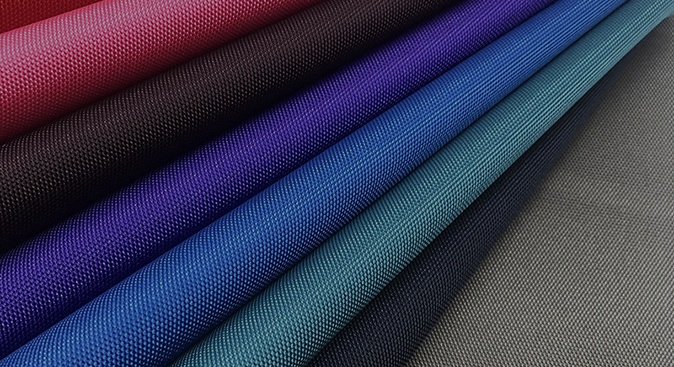Introduction
Definition of Tarpaulin
Tarpaulins are typically composed of durable materials such as canvas, polyester, or polyethylene, which are selected for their resilience and ability to withstand environmental challenges. The material is often treated or coated to enhance its waterproof properties, ensuring effective protection against rain, moisture, and other elements.It is a strong and waterproof fabric material used for various protective and covering purposes. It is designed to shield objects, surfaces, and equipment from adverse weather conditions, making it a versatile and essential tool in a wide range of applications.
Definition of Tarp
A tarp is a versatile and waterproof material used for covering and protection in various applications. It is a durable fabric typically made from materials such as canvas, polyester, or polyethylene, chosen for their strength and resistance to environmental elements.It is designed to shield objects, surfaces, and equipment from rain, moisture, and other external factors. Its waterproof properties make it an ideal choice for temporary shelter, outdoor storage, construction site coverings, camping, and numerous other practical uses.Due to its lightweight and portable nature, tarp is easy to handle and transport, making it a convenient solution for protection in different situations. The material’s weather-resistant characteristics and affordability make it a popular choice in a wide range of industries and everyday tasks.
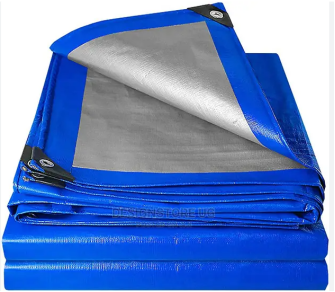
Applications and Performance
Common Applications of Tarpaulin
Construction Sites: Tarpaulins are widely used as temporary covers for construction materials, equipment, and scaffolding. They protect these items from rain, dust, and debris, ensuring a safer and more efficient work environment.
Transportation: Tarpaulins serve as truck covers, trailer curtains, or cargo tarps to secure and shield goods during transportation. They offer protection from weather elements and prevent damage or theft of transported items.
Agriculture: Tarpaulins are utilized as ground covers in agriculture to suppress weed growth and protect crops from adverse weather conditions. They are also used as hay covers, livestock shelters, and grain storage covers.
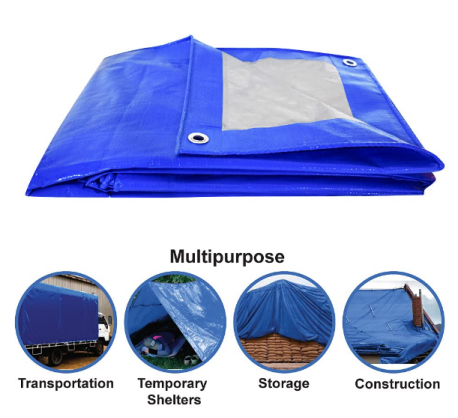
Home and Garden: Tarpaulins are employed as protective covers for outdoor furniture, gardening tools, and equipment. They shield these items from rain, sun, and dirt, prolonging their lifespan and reducing maintenance needs.
Pool Covers: Tarpaulins are used as pool covers to protect the water from debris, leaves, and other contaminants, helping to maintain the pool’s cleanliness and reducing maintenance efforts.
Benefits for Tarpaulin
Strength and Durability:
Tarpaulin is known for its robustness and strength. It can withstand heavy loads and rough handling, making it suitable for use in demanding and heavy-duty situations.
Resistance to Tearing and Abrasion:
The material’s resistance to tearing and abrasion ensures that it remains intact and functional even in challenging environments. This feature enhances its longevity and reliability.
Ability to Withstand Harsh Weather Conditions:
Tarpaulin is engineered to be weather-resistant, allowing it to endure adverse weather conditions such as heavy rain, snow, and strong winds. It provides effective protection for covered items or surfaces, keeping them safe from weather-related damages.
Waterproof Properties:
One of the most significant benefits of tarpaulin is its waterproof nature. It effectively shields objects and equipment from rain and moisture, preventing water damage and corrosion.
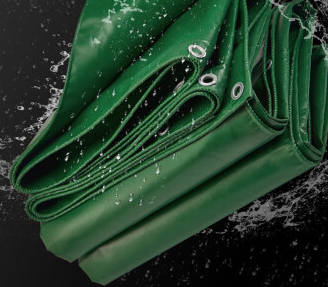
UV Resistance:
Many tarpaulins are treated with UV-resistant coatings or additives, protecting them from the harmful effects of the sun’s ultraviolet rays. This feature prevents fading and degradation of the material, ensuring its continued performance.
Versatility:
Tarpaulin’s versatility is another advantage. It is available in various sizes, thicknesses, and colors, making it adaptable to a wide range of applications. It can be easily cut, shaped, and customized to fit specific needs.
Tarp Preferred over Tarpaulin
Lightweight and Easy Handling:
Tarp is often lighter in weight compared to traditional Tarpaulin, making it easier to handle and transport. This feature is particularly beneficial for applications where frequent setup and takedown are required.
Enhanced Flexibility and Foldability:
Tarp exhibits increased flexibility and foldability, allowing it to be easily folded into compact sizes for storage and transport. This convenience makes it an excellent choice for outdoor enthusiasts, campers, and travelers.
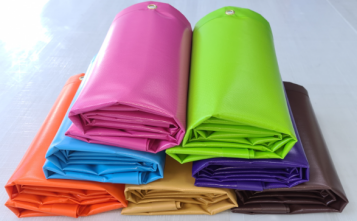
Innovative Material Technology:
Tarp may incorporate advanced material technology, including special coatings or laminates, to enhance specific properties. These technological advancements can provide additional benefits such as increased UV resistance or improved water repellency.
Unique Performance of Tarp
Extreme Durability:
Tarp is designed with exceptional strength, allowing it to withstand rigorous usage and harsh conditions. Its robustness ensures longevity and reliable performance even in demanding environments.
High Tear and Abrasion Resistance:
The material used in Tarp is engineered to be highly tear and abrasion-resistant, reducing the likelihood of damage during use. This quality makes Tarp suitable for applications that require rugged protective covering.
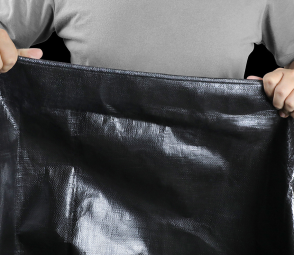
Specialty Coatings:
Tarp may be coated with specialized treatments that enhance its properties further. For example, anti-microbial coatings can be applied to prevent the growth of mold or mildew in damp environments.
Extended UV Protection:
Some Tarp products come with enhanced UV protection, guarding against color fading and material degradation caused by prolonged exposure to the sun’s rays.
Unique Color Options:
Tarp offers a diverse range of color options, making it ideal for applications where aesthetics or easy identification are essential.

Testing and Standards
Industry Standards and Testing Methods
ASTM International: ASTM (American Society for Testing and Materials) develops and publishes voluntary technical standards for a wide range of materials and products. Standards relevant to tarpaulins and tarps cover aspects such as tear resistance, tensile strength, water resistance, and UV stability.
ISO Standards: The International Organization for Standardization (ISO) also sets standards related to tarpaulin materials. ISO standards may cover aspects such as tensile strength, bursting strength, and dimensional stability.
Tear Strength Test: This test evaluates a material’s resistance to tearing under controlled conditions, simulating real-world scenarios where the tarp may be subject to stress or pressure.
Tensile Strength Test: This test assesses a material’s ability to withstand tension or pulling forces. It helps determine the maximum load the tarp can bear before breaking.
Certifications
CE Marking: The CE marking indicates that a tarpaulin or tarp complies with essential health, safety, and environmental protection standards for products sold within the European Economic Area (EEA).
UL Listing: Underwriters Laboratories (UL) certification confirms that a tarp meets specific safety and performance requirements, particularly relevant for fire-resistant tarps.
RoHS Compliance: RoHS (Restriction of Hazardous Substances) certification ensures that the tarp does not contain harmful substances like lead, mercury, or cadmium.
OEKO-TEX Standard 100: This certification confirms that the tarp’s textile components do not contain harmful substances, making it safe for human use.
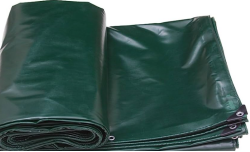
How to Choose Tarpaulin and Tarp
Durability and Strength
Assess the intended application and environment where the tarp will be used. Determine the level of durability and strength required to withstand the conditions it will be exposed to. Consider factors such as tear resistance, tensile strength, and abrasion resistance to ensure the tarp can handle the demands of its intended use.
Testing and Certification
Look for tarps that have undergone rigorous testing and hold relevant certifications. Check if the tarp meets industry standards for tear strength, tensile strength, water resistance, UV stability, and other essential properties. Certifications like CE marking, UL listing, and RoHS compliance can provide additional assurance of quality and safety.
Supplier Selection
Choose a reputable and reliable supplier with a track record of providing high-quality tarps. Look for suppliers who adhere to industry standards, perform testing, and provide transparent information about their products. Read customer reviews and testimonials to gauge their reputation and customer satisfaction.
Quality Control Measures
Raw Material Inspection
Thorough inspection of raw materials is crucial to ensuring the final product’s quality. Manufacturers check the incoming materials, such as canvas, polyester, or polyethylene, for consistency and compliance with specifications. Any deviations or defects are identified, and substandard materials are rejected to maintain the integrity of the final product.
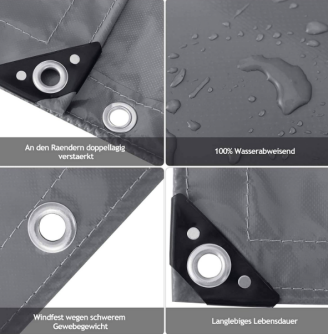
Coating Thickness Measurement
For tarps with protective coatings or laminates, measuring the coating thickness is a critical quality control step. Coatings play a vital role in enhancing properties such as waterproofing, UV resistance, and durability. Regular measurements are taken to ensure the coating thickness meets the desired standards, guaranteeing the tarp’s effectiveness and performance.
Tear and Tensile Strength Testing
Tear and tensile strength are essential performance properties of tarps. Manufacturers conduct standardized testing to measure the tarp’s ability to withstand tearing forces and tension. These tests ensure the tarp meets or exceeds specified strength requirements, providing customers with durable and reliable products.

Conclusion
Tarpaulin and tarp are versatile and reliable materials that play an indispensable role in various industries and everyday applications. Their strength, durability, resistance to tearing and abrasion, and ability to withstand harsh weather conditions make them essential protective coverings for safeguarding valuable assets, surfaces, and equipment.
These protective coverings not only provide reliable shelter from adverse weather conditions but also offer cost-effectiveness and ease of use. Whether in construction, transportation, agriculture, outdoor events, or recreational activities, tarpaulin and tarp prove to be versatile and practical solutions.
Overall, the enduring benefits of tarpaulin and tarp, coupled with stringent quality control measures, ensure that they remain indispensable protective coverings, meeting the diverse needs of industries and individuals alike. Their contributions to durability, weather resistance, and cost-effectiveness make them essential components in safeguarding and enhancing various aspects of modern life.



